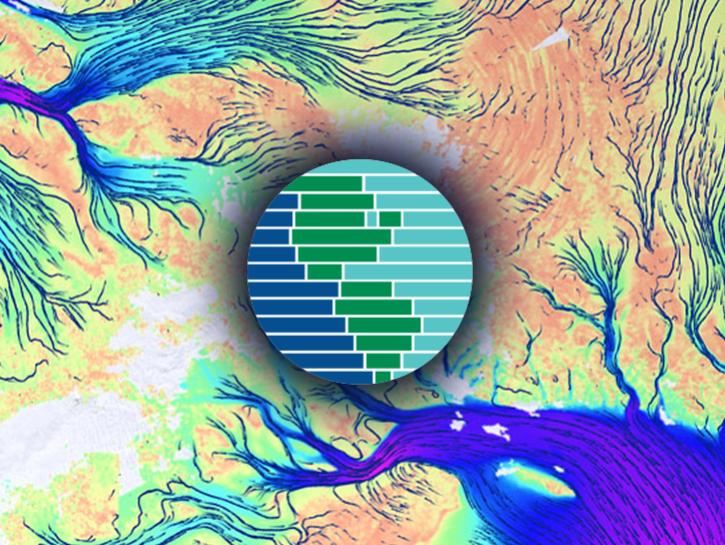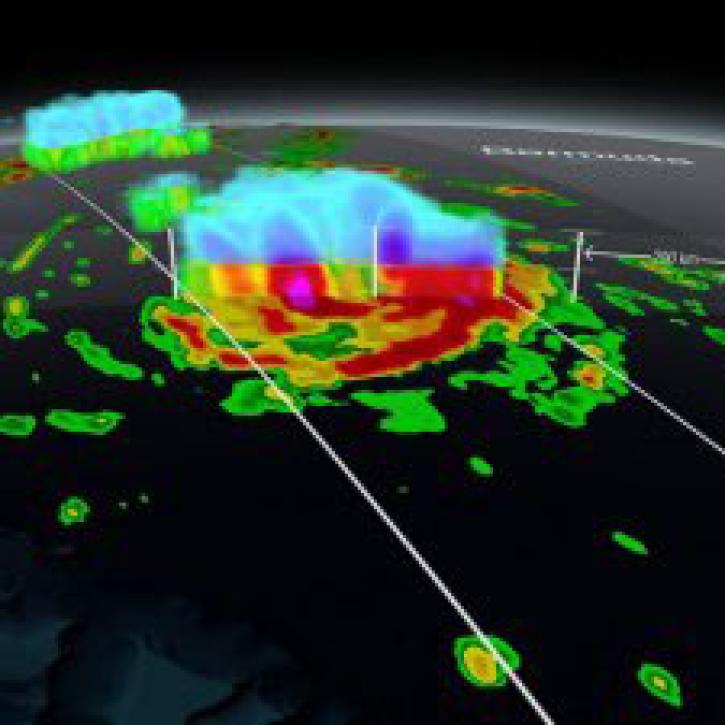We are in the process of migrating all NASA Earth science data sites into Earthdata from now until end of 2026. Not all NASA Earth science data and resources will appear here until then. Thank you for your patience as we make this transition.
Read about the Web Unification Project
Precipitation Data Access and Tools
NASA has a wide range of precipitation data, from hourly rainfall estimates to reanalysis datasets looking back decades. Our datasets and tools help users spot characteristics, trends, patterns, and anomalies in the precipitation that falls to Earth and understand how it affects natural areas and human communities.
Table of contents
Precipitation Datasets
| Dataset | Platforms | Instruments | Temporal Extent | Location Keywords | Spatial Extent | Data Format |
|---|---|---|---|---|---|---|
| BOREAS/SRC AMS Suite A Surface Meteorological and Radiation Data: 1995 | METEOROLOGICAL STATIONS | WIND MONITOR, ULTRASONIC DEPTH GAUGE, TEMPERATURE PROBES, RAIN GAUGES, LICOR QUANTUM SENSOR, PYRANOMETERS, NET RADIOMETERS, BAROMETERS, TEMPERATURE SENSORS, HUMIDITY SENSORS, INFRARED THERMOMETERS | 1995-01-01 to 1995-12-31 | N: 56.89 S: 52.15 E: -97.87 W: -108.51 | ASCII | |
| BOREAS/SRC AMS Suite A Surface Meteorological and Radiation Data: 1996 | METEOROLOGICAL STATIONS | INFRARED THERMOMETERS, HUMIDITY SENSORS, TEMPERATURE SENSORS, WIND MONITOR, ULTRASONIC DEPTH GAUGE, RAIN GAUGES, LICOR QUANTUM SENSOR, PYRANOMETERS, NET RADIOMETERS, BAROMETERS, TEMPERATURE PROBES | 1996-01-01 to 1996-12-31 | N: 59.34 S: 50.57 E: -94.08 W: -110.05 | ASCII | |
| Bowen Ratio Surface Flux: GSFC (FIFE) | FIELD INVESTIGATION | THERMOCOUPLES, Bowen Ratio Devices, HYGROMETERS, RAIN GAUGES, SOIL HEAT FLUX TRANSDUCER, SOIL TEMPERATURE PROBE, SOIL MOISTURE PROBE, NET RADIOMETERS, ANEMOMETERS | 1987-05-26 to 1987-10-16 | N: 39.11 S: 38.98 E: -96.45 W: -96.61 | multiple | |
| Bowen Ratio Surface Flux: KSU (FIFE) | FIELD INVESTIGATION | THERMOCOUPLES, Bowen Ratio Devices, HYGROMETERS, RAIN GAUGES, SOIL HEAT FLUX TRANSDUCER, SOIL MOISTURE PROBE, SOIL TEMPERATURE PROBE, NET RADIOMETERS, ANEMOMETERS | 1987-05-29 to 1989-08-13 | N: 39.11 S: 38.98 E: -96.45 W: -96.61 | CSV | |
| Bowen Ratio Surface Flux: Smith (FIFE) | FIELD INVESTIGATION | THERMOCOUPLES, BAROMETERS, Bowen Ratio Devices, HYGROMETERS, NET RADIOMETERS, RAIN GAUGES, SOIL HEAT FLUX TRANSDUCER, SOIL MOISTURE PROBE, SOIL TEMPERATURE PROBE, ANEMOMETERS | 1987-05-27 to 1989-08-13 | N: 39.11 S: 38.98 E: -96.45 W: -96.61 | multiple | |
| CALIPSO Infrared Imaging Radiometer (IIR) Level 2 Swath, V5-00 | CALIPSO | IIR | 2006-06-12 to 2023-07-01 | GLOBAL | HDF4 | |
| CALIPSO Infrared Imaging Radiometer (IIR) Level 2 Track, V5-00 | CALIPSO | IIR | 2006-06-12 to 2023-07-01 | GLOBAL | HDF4 | |
| CALIPSO Lidar Level 2 Blowing Snow - Antarctica, V1-00 | CALIPSO | CALIOP | 2006-06-12 to 2020-06-30 | ANTARCTICA | HDF5 | |
| CALIPSO Lidar Level 2 Blowing Snow - Antarctica, V1-01 | CALIPSO | CALIOP | 2020-07-01 to 2022-01-19 | ANTARCTICA | HDF5 | |
| CALIPSO Lidar Level 2 Blowing Snow - Antarctica, V2-00 | CALIPSO | CALIOP | 2006-06-12 to 2023-07-01 | ANTARCTICA | HDF5 |
Pagination
SHOWING 10 OF 897
Featured Precipitation Observation Method: GPM
NASA's Global Precipitation Measurement (GPM) platform provides next-generation global observations of rain and snow to help researchers better understand Earth's water and energy cycles and forecast extreme weather and related events.
During this webinar we will provide an overview of TRMM and GPM precipitation data products and discuss the various ways to discover and access these data. We will also demonstrate the visualization and analysis tools and services provided by NASA's Goddard Earth Science Data and Information Services Center (GES DISC).
NASA’s global precipitation data and data processing systems have come a long way from the launch of TRMM in 1997 to the ongoing GPM mission.
9 MIN READ
Precipitation Data Tools
| Tool Sort descending | Description | Services | |
|---|---|---|---|
| Worldview | Worldview offers the capability to interactively browse over 1,200 global, full-resolution satellite imagery layers and download the underlying data. | Analysis, Search and Discovery, Visualization, Access, Comparison, Monitoring Natural Events |
SHOWING 1 OF 1
Frequently Asked Questions
Earthdata Forum
Our online forum provides a space for users to browse thousands of FAQs about research needs, data, and data applications. You can also submit new questions for our experts to answer.
Submit Questions to Earthdata Forumand View Expert Responses
